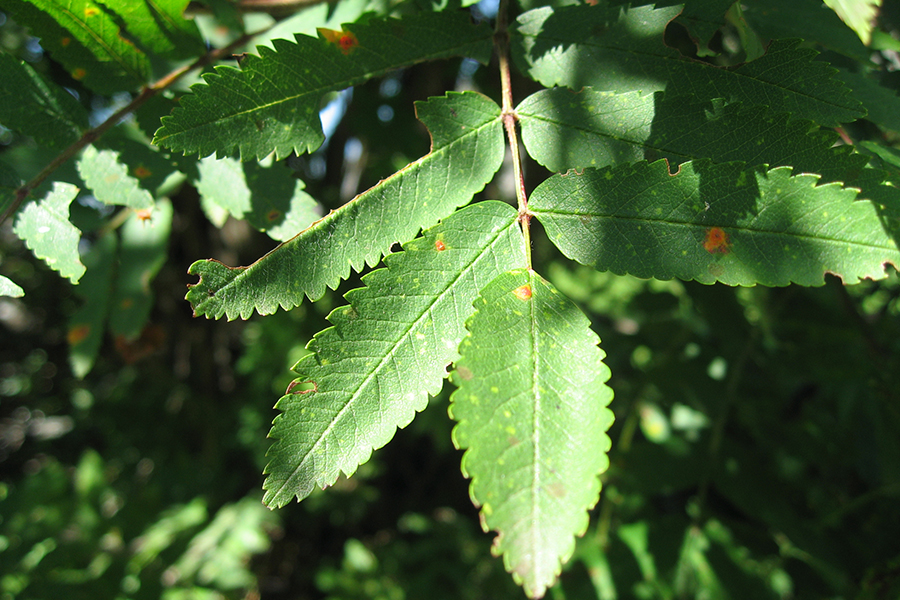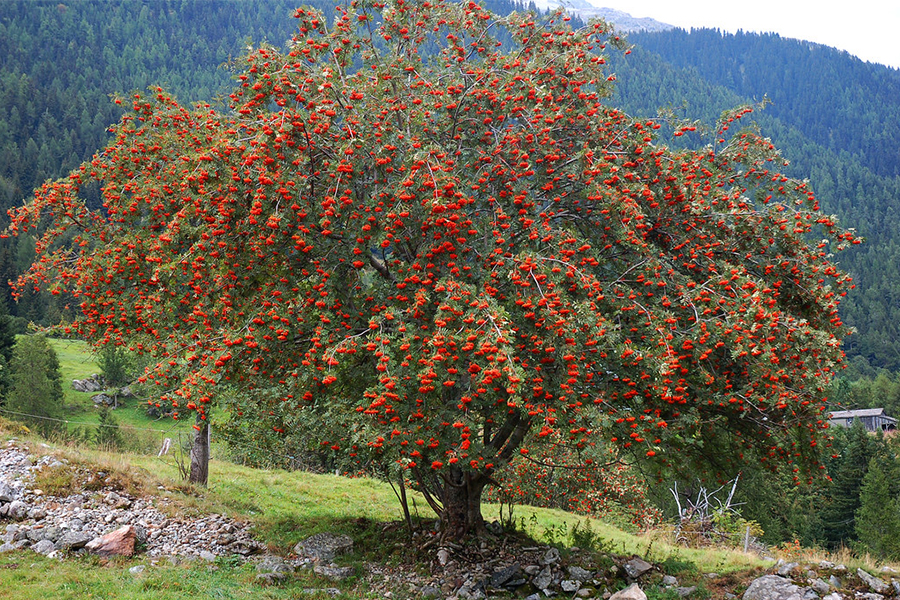Sorbus aucuparia
The European mountain ash, also known as rowan, is a deciduous tree recognized for its distinctive compound leaves and abundant bright orange fruits.
Location
Follow the Hidden Spring Trail up from the corner of Lovell and May Street and see if you can spot the European mountain ash on the left hand side. Another European mountain ash can be found on the cutoff trail connecting Larch Lane and Hidden Spring Trail.


History at Hadwen
Europe mountain ash was documented at the Hadwen Arboretum at least as early as 1900, with Hadwen himself mentioning their cultivation in a lecture delivered to the Massachusetts Horticultural Society in 1900. However, the European mountain ash was not recorded in the arboretum again until its reappearance in 2020.
Keep Learning
Detailed Species Information
The European mountain ash, also known as rowan, is a small deciduous tree in the family Rosaceae, distributed throughout Europe and parts of Asia. This fast-growing and short-lived tree typically attains a height of 16–49 feet (5–15 meters). Often multi-stemmed with upright-reaching branches, it forms a round or irregular crown. The young bark is gray and lustrous, displaying lenticels when young and developing darker tones with lengthwise ridges as it matures. The distinct leaves of the European mountain ash are compound and alternately arranged on the stem, with each leaf composed of four to nine long, narrow leaflets featuring roughly serrated edges. The flowers appear in clusters, showcasing small, whitish blooms with a fuzzy, fine, hair-like texture and a scent reminiscent of ammonia. The tree’s fruit ripens in late summer and early fall, forming clusters of 80 to 100 small, round, orange fruits.
The European mountain ash is a highly tolerant species, capable of withstanding diverse conditions, including temperature variations, air quality, moisture levels, nutrient levels, light conditions, and soil qualities. In its native range, the tree’s fruits are consumed by numerous bird species and several mammals.
In both English and Scottish folklore, the European mountain ash is believed to offer protection from evil and was either harvested or planted to ward off witches or malevolent spirits. Although not commercially significant, the wood of the European mountain ash is occasionally used for carving, woodworking, or as firewood. In landscaping, this tree is widely cultivated and planted in parks, gardens, and streets as an ornamental tree, appreciated for its distinctive leaves and striking orange fruits.
